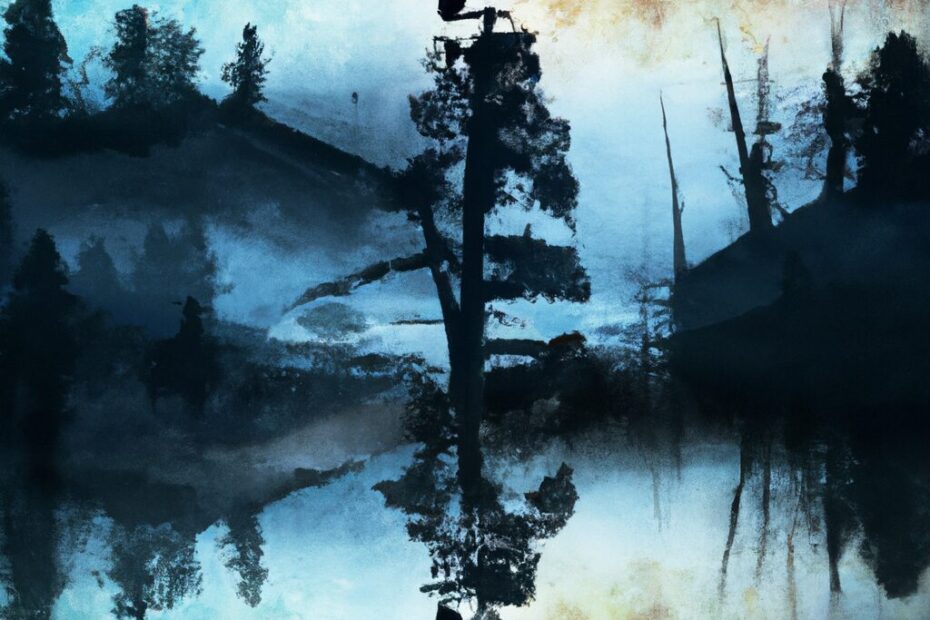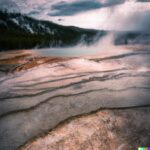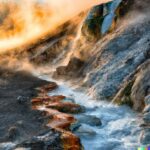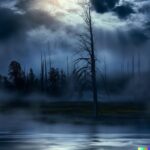The early settlers of Yellowstone held a unique perspective on the geysers that dotted the landscape. Their interactions with these natural wonders were steeped in beliefs and superstitions, leading to fascinating accounts of their experiences.
From considering geysers as magical or supernatural to using them for medicinal or spiritual purposes, the settlers’ interactions with these geothermal features were both captivating and sometimes dangerous. Join us as we explore the legacy of their perceptions and interactions with Yellowstone geysers.
Who Were the Early Settlers of Yellowstone?
The early settlers of Yellowstone, including pioneers and explorers, were among the first to encounter the awe-inspiring sights of the geothermal features that define the region.
Their interactions with these geysers and hot springs were rooted in a sense of wonder and astonishment, as they navigated through the rugged terrain, documenting their discoveries. These early expeditions not only marked the beginning of a journey into the unknown but also shaped the cultural significance of these geothermal marvels for future generations. The pioneers’ perceptions of these natural wonders as mysterious and powerful entities contributed to the folklore and myths that still surround Yellowstone’s geysers today.
What Was Their Perception of Geysers?
The early settlers’ perceptions of Yellowstone geysers ranged from curiosity and wonderment to a sense of scientific inquiry, as they sought to understand the cultural and geological significance of these natural phenomena.
Their encounters with these erupting hot springs sparked discussions among the settlers about whether the geysers were gifts from deities or manifestations of natural forces. Some believed the geysers held spiritual significance, viewing them as portals to the underworld or sources of healing powers. Others approached these phenomena with a more pragmatic mindset, attempting to unravel the mystery of how these boiling waters shot up into the air with such force and regularity. These varying perspectives and interpretations played a crucial role in shaping the settlers’ initial understanding and appreciation of these geologic wonders.
How Did They Interact with Geysers?
The early settlers interacted with Yellowstone geysers by observing iconic landmarks like Old Faithful, witnessing eruptions, and weaving folklore tales that intertwined with Native American beliefs about these natural wonders.
They were captivated by the rhythmic spouting of geysers such as Old Faithful, which provided a reliable and spectacular display of nature’s power. These early encounters sparked their imagination, leading them to create stories and legends that explained the mystical origins of these fiery fountains.
As they witnessed eruptions shooting high into the sky, the settlers felt a deep connection to the land and its powerful forces, incorporating these awe-inspiring events into their folklore tales that echoed the reverence and respect held by Native American tribes for these sacred sites.
What Were the Beliefs and Superstitions Surrounding Geysers?
The beliefs and superstitions surrounding Yellowstone geysers encompassed a tapestry of folklore, myths, legends, and profound Native American beliefs that attributed spiritual significance to the geothermal marvels.
Stories passed down through generations often highlighted the awe-inspiring power of geysers, with some tales portraying them as living entities communicating with the natural world. Early interpretations by explorers and scientists led to a deeper understanding of the geological processes behind these eruptions. The geysers’ significance extended beyond mere geological wonders, influencing artistic representations and inspiring cultural interpretations that shaped our understanding of the natural world.
Did Early Settlers Consider Geysers to Be Magical or Supernatural?
Early settlers often viewed geysers through a lens of mysticism, attributing magical or supernatural qualities to the thermal springs and steam vents based on their mystical experiences and early writings.
These explorers and pioneers were captivated by the powerful eruptions and shimmering pools of hot water, interpreting them within a cultural context of wonder and awe. Their writings often intertwined natural phenomena with supernatural beliefs, crafting tales of spirits dwelling within the geysers or divine intervention causing their eruptions. This blending of cultural interpretations with mystical experiences added layers of mystery to their encounters with these geothermal features, shaping how geysers were perceived as gateways to unseen realms.
Were Geysers Used for Medicinal or Spiritual Purposes?
Some early settlers perceived geysers as sources of medicinal or spiritual healing, utilizing the water spouts for their perceived therapeutic or spiritual benefits in their interactions with the geothermal marvels.
These early encounters with geysers were marked by a fascinating duality – for some settlers, the geysers were seen as natural sources of healing, offering a chance to alleviate ailments through the mineral-rich waters believed to possess medicinal properties.
On the other hand, there were those who viewed geysers as portals to the spiritual realm, places where connections to the divine could be forged. The steam and mist rising from the geysers were interpreted as manifestations of spiritual energy, leading to rituals and ceremonies conducted by those seeking spiritual enlightenment.
How Did Early Settlers Document Their Experiences with Geysers?
Early settlers meticulously documented their encounters with Yellowstone geysers through historical records, detailed early accounts, vivid descriptions, and meticulous documentation that captured the essence of these geological wonders.
These early writings provide valuable insights into how the pioneers viewed and interacted with the natural marvels of geysers that were unfamiliar to them. The detailed accounts offer a glimpse into the awe and wonder that these geothermal features evoked, showcasing the curiosity and fascination of those early explorers. With vivid descriptions that border on poetic, these records not only serve as scientific observations but also as a window into the emotional and cultural impact these phenomena had on the individuals who first witnessed them.
Were There Any Famous Accounts or Journals Written About Geysers?
Some early explorers left behind famous accounts and journals detailing their studies and scientific understanding of geysers, shedding light on the environmental impact and spurring conservation efforts to protect these natural wonders.
The early expeditions led by these intrepid adventurers provided crucial insights into the geological phenomena of geysers and the delicate ecosystems surrounding them. Through meticulous observation and documentation, they revealed the interplay between geothermal activity, water dynamics, and the diverse flora and fauna dependent on these unique environments. Their pioneering work laid the foundation for modern environmental impact assessments and conservation strategies aimed at preserving these geothermal features for future generations. The groundbreaking studies conducted by these early explorers continue to shape conservation efforts worldwide, emphasizing the importance of scientific inquiry in safeguarding our natural heritage.
What Were Some Common Themes in These Accounts?
Common themes in early accounts and journals about geysers revolved around the geological formations, geologic wonders, steamboat tours, and narratives of the early settlers, providing a comprehensive view of the region’s natural beauty and significance.
These narratives often depicted the sheer awe and wonder experienced by the early settlers as they ventured into the heart of geothermal activity, encountering iconic landmarks that seemed almost otherworldly.
The descriptions of the powerful jets of water shooting into the air, accompanied by the rumbling sounds and billowing steam, painted vivid pictures of nature’s raw power in their writings.
The steamboat tours, a popular way to explore these geysers, offered a unique perspective, allowing travelers to witness these geologic marvels up close and personal, further fueling the fascination with these natural wonders.
What Were the Dangers of Interacting with Geysers?
The dangers of interacting with geysers were underscored by the looming threats of volcanic activity, unpredictable geysers’ behavior, and the potential risks associated with early encounters and interactions with these natural wonders.
As early settlers navigated the untamed landscapes, they were often unaware of the volatile nature of geysers, leading to perilous situations. The lack of understanding about geothermal features meant that individuals risked getting scalded by boiling water or injured by sudden eruptions.
Early studies conducted on geysers aimed to unravel the mysteries of their behavior and mitigate the environmental impact caused by human interventions. These efforts helped shape our knowledge and appreciation for the intricate balance between human curiosity and the raw power of nature.
Were There Any Recorded Injuries or Fatalities?
Recorded injuries and fatalities resulting from interactions with geysers became subjects of cautionary folklore tales, underscoring the significance of understanding the geysers’ behavior and the risks faced by early expeditions.
These documented incidents served as stark reminders of the unpredictable nature of geysers, prompting travelers to approach these natural wonders with a newfound sense of respect and caution. As explorers delved deeper into the mysteries of geothermal activity, the narratives surrounding these perilous encounters evolved into folklore tales that warned future generations about the potential perils lurking beneath the Earth’s surface. The amalgamation of scientific curiosity and folklore traditions emphasized the delicate balance between human curiosity and the forces of nature that shape geysers’ behavior.
How Did Early Settlers Learn to Safely Interact with Geysers?
Early settlers navigated the challenges of safely interacting with geysers through a blend of scientific inquiry, cultural interpretations, and conservation efforts aimed at preserving the geothermal marvels for future generations.
These early interactions with geysers demonstrated a gradual shift from awe-inspired curiosity to a deeper understanding of their volatile nature. Early descriptions of geysers often portrayed them as mystical entities with great spiritual significance, prompting settlers to approach them with reverence and caution. As scientific studies advanced, pioneers began to comprehend the geological processes behind geyser eruptions, paving the way for enhanced safety measures and conservation initiatives.
Today, conservation efforts continue to play a vital role in safeguarding these natural wonders, ensuring that the delicate balance between human curiosity and environmental preservation is maintained.
Last Updated on February 7, 2024 by Jon Waraas – Originally Posted: February 7, 2024

I’m Jon Waraas, and I’ve been navigating the online world since 2006. By day, I’m the proud owner of some eCommerce gems, and by night, I’m the voice behind the adventures on Waraas.Com.
My heart, however, belongs to the wild beauty of Yellowstone National Park. I’ve got a collection of websites dedicated to sharing the wonders of this natural masterpiece. Oh, and did I mention? I’m currently building my own cabin inside the ghost town of Gilmore, Idaho – a cabin with tales to tell!
When I’m not immersed in the digital realm, you’ll find me lacing up my boots for a good hike or setting up camp under the star-studded sky.




